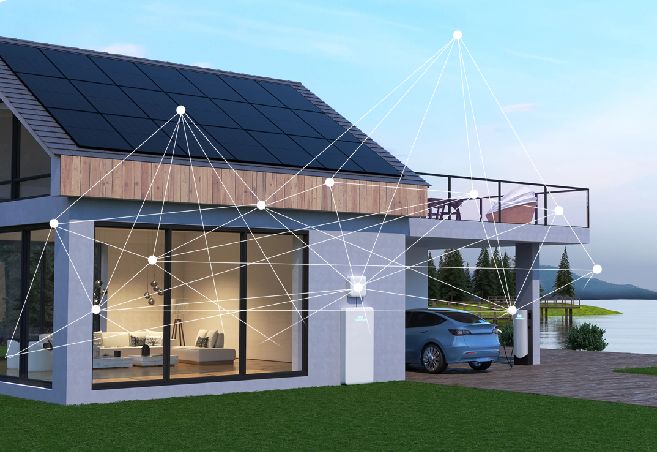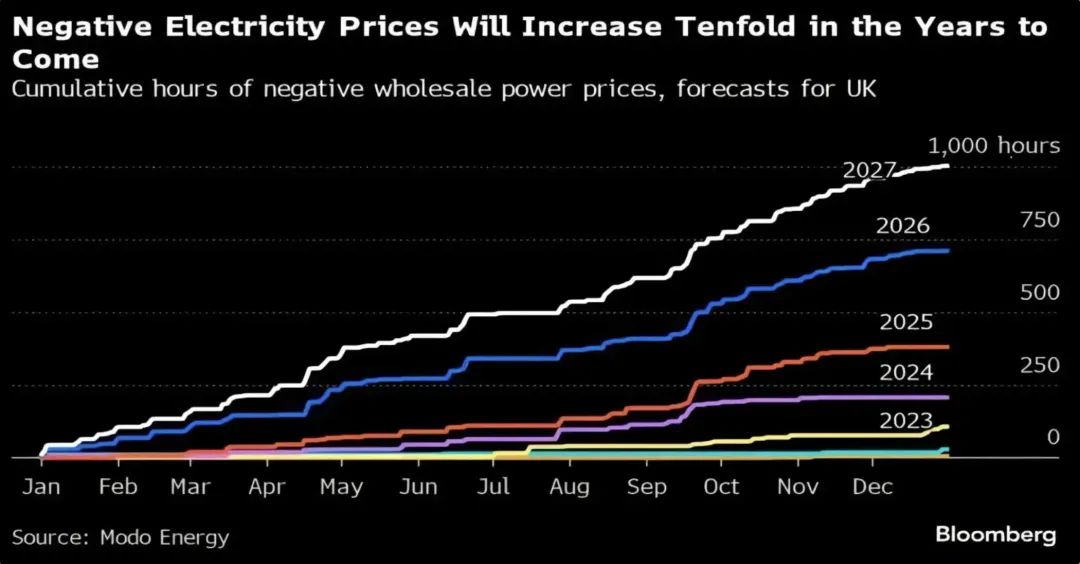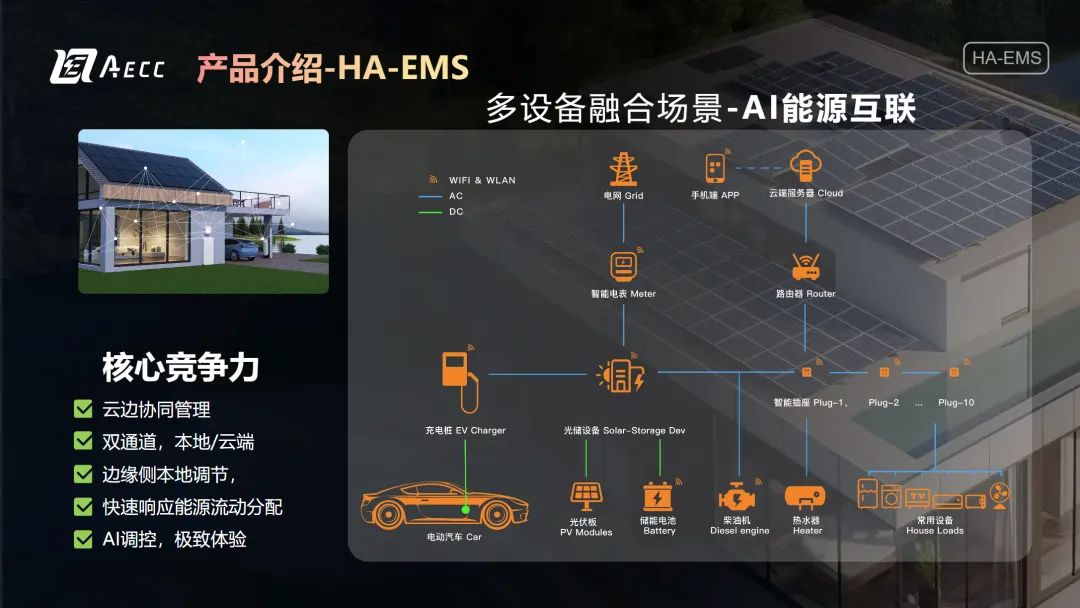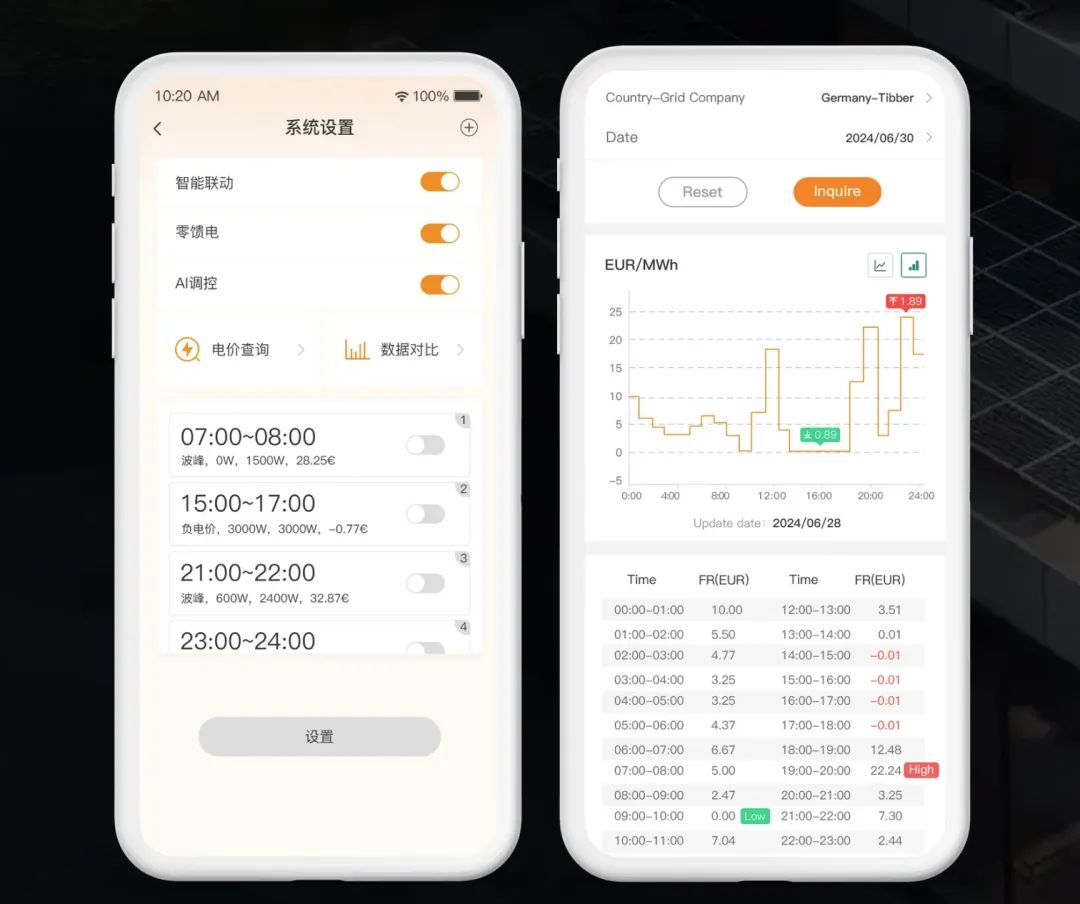使用AI辅助用电收益,户储产品正加速迈向全屋智能。
在光储行业众多前辈面前,能控云总经理高阳可谓是实力派,十余年能源物联网从业经验赋予其对智能电网各环节精细化管理的深入研究。
储能行业从卷出海、卷产品到现在的卷价格、卷性能。在高阳看来,跑马圈地之后,产品硬件方面进入了创新瓶颈期。价格战激烈程度不减,户储产品又需基于用户需求面临快速迭代,通过软件解决方案实现高效绿电耗能计划是破局之道。

目前市面上的能源管理方案都是将数据上传至云端,再由云端发指令对设备进行控制,依赖网络、时延长、控制不精准。而AI能源控制解决方案服务商能控云的核心竞争力是接入不同国家地区的实时电价信息,结合设备参数、气象、用电习惯等通过AI算法生产最优耗能计划策略,通过光储设备、充电桩、智能电表、智能插座、热泵、家居负载等设备间边缘互联和云平台通讯的双通道数据交互,实现毫秒级数据传输、精确能量分配、脱网运行和最小耗能支出。
能控云的HA-EMS系统的应用客户包括海尔纳晖新能源、英威腾光伏、天技新能源、三科天德普储能科技等企业,在海外市场的服务用户人数超过30万。
01负电价时代急需能源管理
“负电价”指的是发电者在向电网端输送电力时需支付费用,简而言之:“负电价”时段,居民用电免费同时有用电补贴,相反此时往电网送电可能会遭到罚款。以欧洲为首的光伏发电更趋常态化,负电价现象愈演愈烈。
德国近两年内阳台光伏、屋顶光伏装机量迅速攀升,在今年5月因为太阳能发电过剩导致电价跌至负值,在7月的负电价时长达到破纪录的80多个小时。据欧洲能源交易所(EEX)统计数据显示,英国预计到2027年累计负电价小时数将达1000小时。

总而言之,以欧洲地区为首,消纳多余的光伏发电成为新问题。
居民为应对负电价,纷纷转向配备户储。而当动态电价趋于常态化,最大化利用家庭能源成为最优解。硬件之上,软件层面的能源管理可以持续监测能源消耗,对波动电价做出灵敏反应,最终帮助用户减少电费开支。
但是,居民家电产品类型众多、品牌又非常庞杂。用户对于全屋智能一体化体验的需求日益高涨,呼唤一款能够真正串联起不同品牌、兼容所有家用能源周边设备的AI软硬件系统,实现智慧的能源管理。

02全生态户用能源互联
能控云HA-EMS一套云边协同能源管理解决方案,通过云平台生成最优耗能计划策略,使设备端独立运行,并具有五大控制场景,尽可能保证耗能设备(充电桩、热泵、热水器等)在电价低时段启用,在电价峰值时段减少耗能设备启用的同时发挥电池最大能量输出管理,实现光储设备发、充、放能源最大化利用。

在APP使用方面,能控云HA-EMS支持设备自动配、组网,一键开启AI调控,实现秒级数据刷新和精准状态推送。为了方便用户了解耗能计划,还进一步提供收益对比、能耗分析、电价查询等功能。
能控云助力设备厂家能够快速完成全生态户用能源互联的秘诀,就是采用客制化AECC边缘采集硬件和内置互联协议,可兼容新旧光储设备通讯协议,光储设备无需做协议修改,最快一个星期设备升级具备能源互联生态。
与此同时,能控云提供最优的耗能计划帮助用户减少耗能支出,提供互联生态服务器来增强用户粘性;通过给用户开放订阅、充值等服务,为设备厂家实现设备软硬件双向收益。
Household Energy Storage Companies Urgently Need a Second Growth Spurt, AI + Energy Management to Break Deadlock
On the general trend of using AI to enhance electricity cost savings, and home energy storage products are accelerating towards whole-house smart.
In front of many seniors in the photovoltaic and energy storage industry, the general manager of AECC, Gao Yang, can be regarded as a seasoned professional. More than ten years of experience in the energy Internet of Things industry has given him an in-depth study of the fine management across various aspects of smart grids.
The energy storage industry has evolved from overseas sales and product quality to today’s competition in price and performance. In Gao Yang’s view, after rushing to stake claim in new markets, the hardware aspect of the products has entered a period of innovation bottleneck. The intensity of price wars remains unabated, and household energy storage products need to face rapid iteration based on user demand. Achieving an efficient energy consumption plan through software solutions is the way to break the deadlock.
At present, energy management solutions on the market all upload data to the cloud, and then the cloud sends instructions to control the equipment. They rely on the network, have a long time delay, and the control is not accurate. The core competitiveness of AECC, an AI energy control solution service provider, is to access real-time electricity price information in different countries and regions, combined with equipment parameters, meteorology, and electricity usage habits, etc., to produce the best energy consumption plan strategy through AI algorithms. Through the dual-channel data interaction between edge interconnection of photovoltaic energy storage devices, charging piles, smart meters, smart sockets, heat pumps, home loads, and cloud platform communication, it realizes millisecond-level data transmission, precise energy allocation, off-network operation, and minimum energy expenditure.
The application of AECC’s HA-EMS system includes customers such as Haier Nahui New Energy, INVT, TENTEK, SAKO SOLAR, etc., with more than 300,000 users in the overseas market.
The Era of Negative Electricity Prices Urgently Needs Energy Management
“Negative electricity prices” refer to the situation where power generators need to pay fees when delivering electricity to the power grid. In simple terms, during the “negative electricity price” period, residents can use electricity for free and also have electricity subsidies. On the contrary, at this time, sending electricity to the power grid may be fined. Taking Europe as the leader, photovoltaic power generation is becoming more and more normalized, and the phenomenon of negative electricity prices is becoming more and more intense.
In Germany, the installation of balcony photovoltaics and rooftop photovoltaics has soared in the past two years. In May of this year, due to an excess of solar power generation, the electricity price fell to a negative value, and the duration of negative electricity prices in July reached a record-breaking 80+ hours. According to data from the European Energy Exchange (EEX), the UK is expected to reach a cumulative negative electricity price of 1000 hours by 2027.
All in all, with the European region leading the way, the consumption of excess PV power is becoming a new problem.
In response to negative electricity prices, residents have turned to home energy storage. When dynamic electricity prices tend to be normalized, maximizing the use of home energy is the best solution. Above the hardware, the software level of energy management can continuously monitor energy consumption, respond sensitively to fluctuating electricity prices, and ultimately help users reduce electricity bills.
However, there are many types of home appliances in residents’ homes, and the brands are very diverse. The demand of users for a truly integrated home intelligence experience is increasing, calling for an AI software and hardware system that can truly connect different brands and be compatible with all home energy peripheral devices to achieve intelligent energy management.
Interconnection of Energy in All-Ecology Households
The HA-EMS is a cloud-edge collaborative energy management solution launched by AECC. This system generates optimal energy consumption plans through the cloud platform, enabling independent operation of devices at the edge. It includes five major control scenarios, aiming to activate energy-consuming devices (such as charging stations, heat pumps, and water heaters) during low electricity price periods and reduce their usage during peak price periods. Additionally, it maximizes battery energy output management, optimizing the utilization of photovoltaic and energy storage equipment.
In terms of APP usage, AECC HA-EMS supports automatic equipment matching and networking, one-click AI control, and enables second-by-second data refreshing and accurate status pushing. To facilitate users’ understanding of the energy consumption plan, it also provides functions such as revenue comparison, energy consumption analysis, and electricity price inquiries.
Energy Control Cloud enables equipment manufacturers to quickly complete full eco-household energy interconnections using customised AECC edge collection hardware and built-in interconnection protocols, which can be compatible with the communication protocols of new and old photovoltaic energy storage devices. The photovoltaic energy storage devices do not need to modify the agreement, and the equipment can be upgraded with energy interconnection ecology in just one week.
At the same time, AECC provides the best energy consumption plan to help users reduce energy consumption expenditure, provides an interconnection ecosystem server to enhance user stickiness; by opening subscriptions, recharging, and other services for users, it also helps equipment manufacturers to achieve dual hardware and software revenue for equipment.